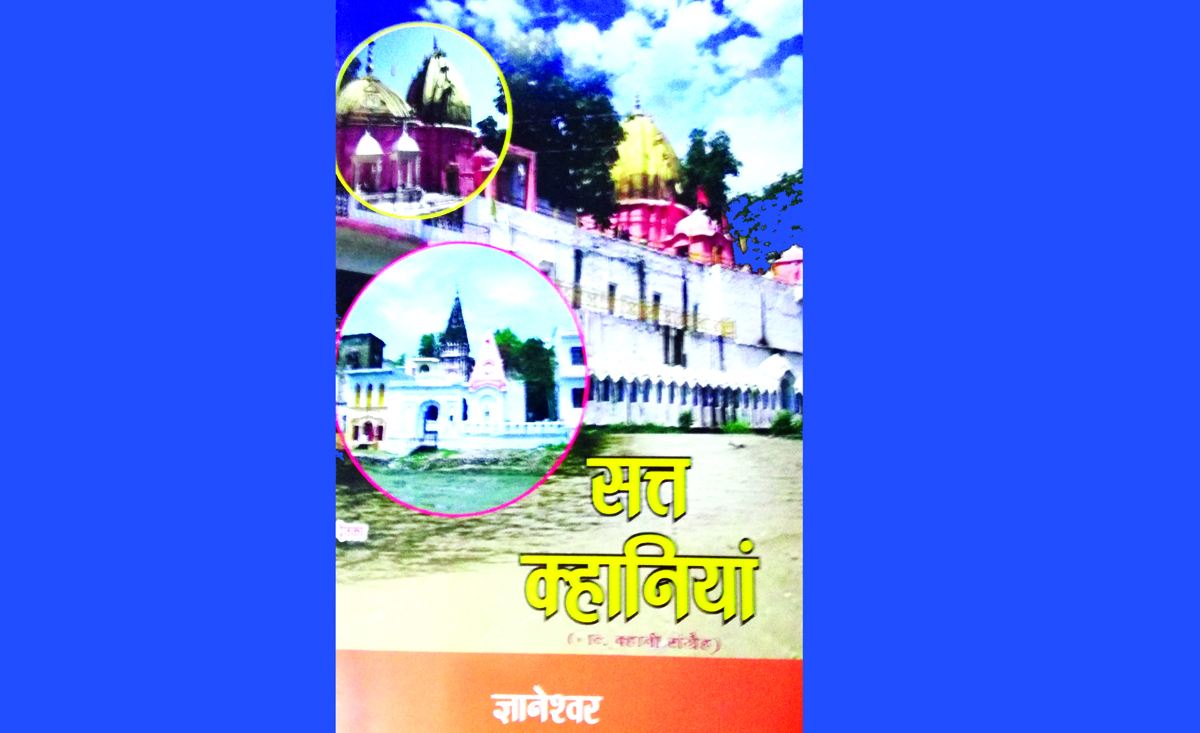Suman K Sharma
Gianeshwar, a SahityaAkademi’s ‘Baal Sahitya’ awardee (‘Phi KehHoa’, a novel, 2010), has published another book for children. This time, it is a collection of stories, titled ‘SattKahaniyan’ (Anu Prakashan, Jammu, 2018, pp 88). It is no coincidence that the collection takes the author’s older sister, Padma Sachdev, back to the moment she had held him in her hands as a new-born babe. ‘Even those who don’t speak Dogri should read these stories,’ she says (pp 5-6).
Indeed, the childlike simplicity of the seven stories is heart-warming. ‘HaarteJitt’ is about 8-year old Shaivi’s attainment in the sport of her choice, Badminton, and her bonding with the grandparents. ‘Saambh-Samhaal’ narrates how Jatan, a student of Class 8, has taken upon himself the responsibility of tending to the smallest needs of his ageing grandpa. ‘PakkiyaanSahelediyan’ is a charming tale of fast friendship between Shaambhavi and Ruksana, a Hindu girl from Jammu and a Muslim girl from Srinagar. ‘PakkeMittar’ celebrates the friendship of Mheshu, a city boy and Bansi, his cousin,from the pleasant climes of a village. The tragic end of the story amid Arcadian bliss is sure to make it memorable.
Then there are three stories in which non-human characters play a significant part. It turns out a rewarding attempt to meld the traditional form of story-telling with the concerns of the contemporary world. ‘DalerChidi’, as the title implies, is about the valour of a crippled sparrow to save its young ones. ‘TitliteGlaab’ is a delightful tale about the mutual fascination between a rose-bush and a butterfly. Humans – the children Divu, Vaidi, Yajur, Shaambhavi, Paarmita and the grandpa – do appear in it, but only as peripheral characters. ‘Ambay da Boohta’ tells how a mango tree is able to bring about peace and amity between the two acrimonious factions of a joint family.
Writing for children is a demanding job. One has to cast aside all the load of adulthood and relearn to fly like a fledgling in the limitless skies of creativity. Any false move and the effort proves futile. This happens often enough when an author talks down to his young readers, or worse still, curdles the fun by adding unappetising globs of ‘good sense’ to his fiction. Happily, Gianeshwar has struck a golden mean. There is whole lot of fun in his stories and good sense too. Keeping the language simple and perky, choosing themes that would be close to the heart of any child,crafting the plots uncomplicated and yet not predictable are some of the means the author has adopted to make his stories so much fun to read. To ‘Titli and Glaab’, he has even added a jingle:
Urhdiurhdititliaayi/Boohteupparbaithijaayi
Boohte da kandaageyachhoohi/Titlikardiui, ui, ui
While goings to lengths to entertain and tickle the young minds, Gianeshwar has consciously added a good measure of advice without seeming to be doing so. In ‘HaarteJitt’ for instance, he devotes a whole passage (p.20) to detail how Shaivi turns a losing game into a victory by adopting the tactic of her coach. Likewise, in ‘Saamb-Samhaal’, young Jatan is facilitated by his architect father to keep his belongings in proper places. The habit has been firmly ingrained in him. At the end of the story Jatan is seen enabling his forgetful grandpa to keep his things within easy reach to obviate any chances of misplacing them. The amusing role-reversal is the author’s way of telling that we need not worry too much of the infirmities of old age if we have groomed our children well enough. The artefact of grandchild to grandparent serves two purposes – it makes the plot more plausible and at the same time it takes away the barb from the advice.
Author Gianeshwar with his ‘SattKahaniyan’ has set in Dogri a high standard of writing for children.


